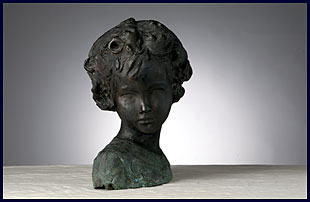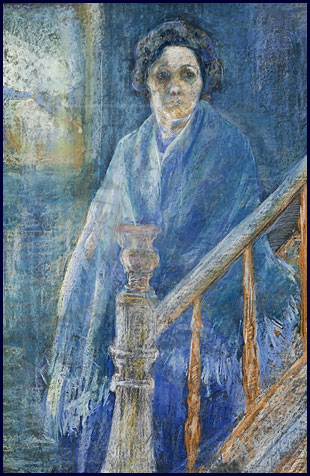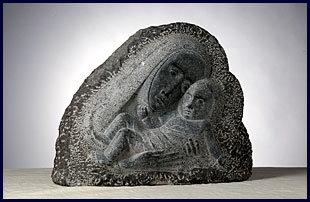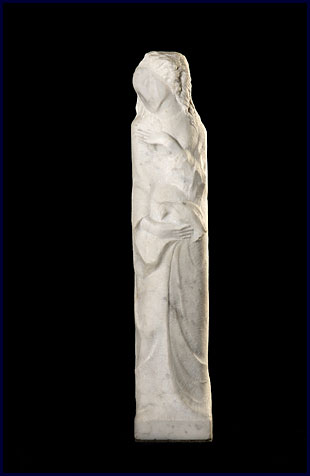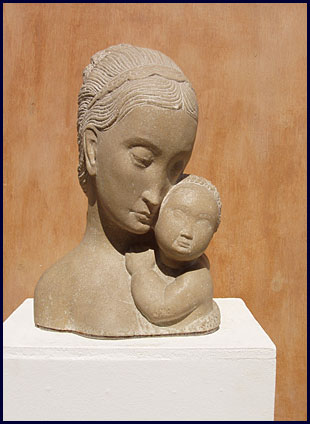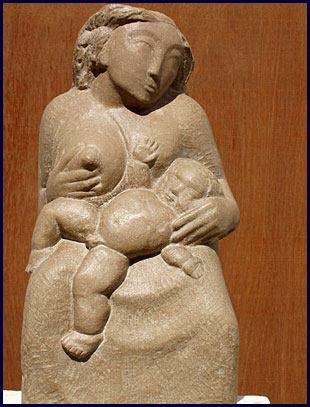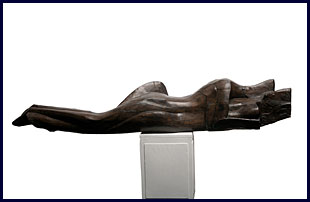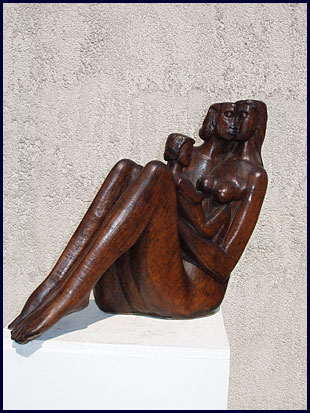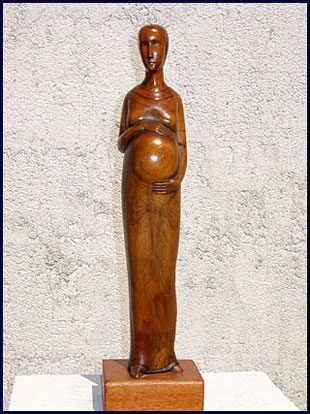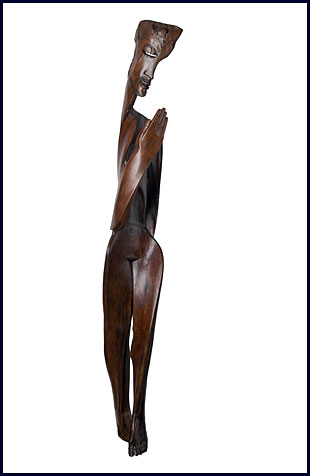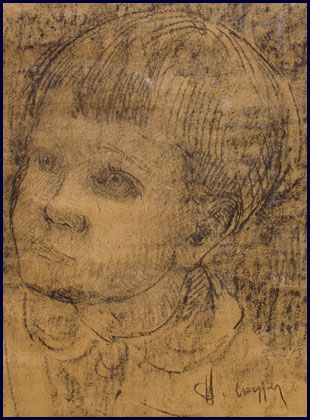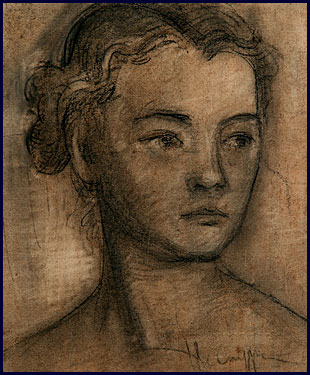

« The collection » |
||||||||||||||||||||||||||||||||||||||||||||||||||||||||||||||||||||||
The small show-room of the studio dwelling, currently an educational room, houses a large collection of portraits in plaster: most of them are children portraits and a whole series of well-known Flemish people from the Interbellum: there are sculptures of priest-poet Jan Hammenecker (1878-1932), of dramaturge Anton Van De Velde (1895-1983), youth leader Ernest Van Der Hallen (1898-1948), bibliographer Joris Baers (1888-1975), politics woman Maria Baers (1883-1959), painter Hubert Wolfs (1899-1937) and not to forget of Guido Gezelle (1830-1899). These portrait heads and busts where made in the beginning of the years 1930.
His paintings were also kept there as well as in the other rooms of the house, with highlights like the beautiful Dijlezicht (1924) and the Portrait of my ill mother (1923). In the museum building, a selection of 150 sculptures and 75 drawings can be admired. The sculptures include small etchings (bozzetti) and life-size models in plaster used for assignments the artist produce on assignment. The small sculptures in wood and stone constitute the most valuable core of the collection, because it includes many tailles directes, which are obviously quite unique pieces. Iconographically speaking, the array of sculptures can be categorised into profane and religious work. The presence of religiously inspired sculptures is due to the buyers of Herman De Cuyper's work: the catholic Flemish milieu from the period between the two wars. One of the artists most wanted desires had always been to rejuvenate the religious art in his land. In those times, church wardens were important clients of sacral art.
As from 1937, Herman De Cuyper reached an animist phase, even so in his religious themes. A splendid example of this is the sketch in blue stone for the Madonna retable in the chapel of the Klein-Seminarie in Hoogstraten (1938) or O.-L.-Vrouw in verwachting (Notre Dame pregnant), a crucial piece in marble from 1937.
Visit the collection on-line: IRPA / KIK |
Among the profanes, Mother-and-child portrayals are the most numerous ones: these are tailles directes, in most cases small in dimensions have a dominant frontal view and in which he always strived for an introverted model. Very often De Cuyper used the da prima-technique in bluestone and practiced the contradiction between finished and unfinished as a constitutive element of the sculpture-freed-from-matter: this adds an extra dimension to the co-creation of he who contemplates the art. Polished flesh regions contrast with a roughed background thus highlighting the human face.
The intimistic representations of the important moments of life (love, mating, pregnancy, birth, motherhood, family and the world of a child), are worked out plastically by Herman De Cuyper into metaphysics of the human face.
He creates sculptures spiritualising the human condition and raise it to a higher level. The profane and religious dimension blend into one and the same level. The drawings decorating the walls are nearly entirely devoted to the world surrounding the child. These portraits ware drawn mostly on white paper and with basic means (pencil, chalk and sanguine). Their facture and spiritual strength of expression show a lot of kinship with the graphical work of Albert Van Dyck (1902-1951), a painter considered to be the most important exponent of animism. |
|||||||||||||||||||||||||||||||||||||||||||||||||||||||||||||||||||||
![]() ©Museum Herman De Cuyper 2004 » Français | Nederlands
©Museum Herman De Cuyper 2004 » Français | Nederlands
